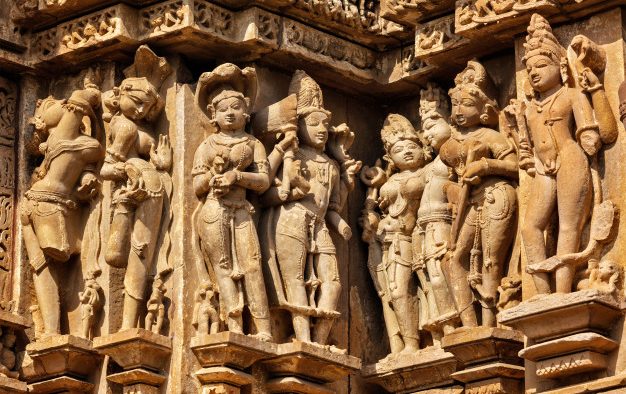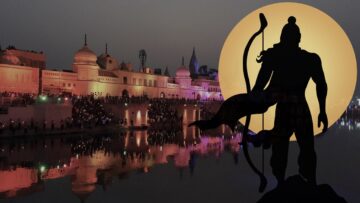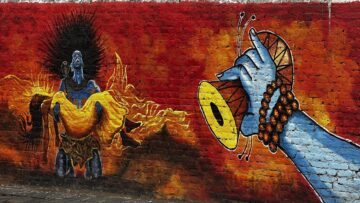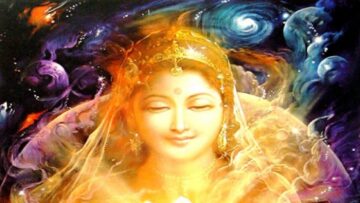The mystery of the Vedic Apsars has been interlaced gracefully by the treads of artistic affluence, spiritual eloquence, and erotic aspiration. The Apsaras of Brahma have been an indispensable facet in ascertaining the reasons responsible for the duplication of humankind and at the same time keeping mankind dedicated to the aspect of the Divine.
These celestial beauties have been smeared by the essence of Bharat Muni’s Nava Rasas as discussed in the Natyasastra. With their captivating charisma, the Apsaras have been capable of arousing emotions through their persuasive gestures and movements.
The Vedic scriptures of the bygone, with utmost ease and honesty, have validated erotic urge as a natural instinct and thus decided to give it the eventual creative grandeur through the Apsaras.
These celestial maidens of the Heaven, crafted in stones, dyed with hue, printed in Puranic texts and literature elaborately depict the most pleasurable aspect of the Shringara Rasa is Kama – sensual desire. They showcase with their artistry the attainment of ultimate sensory pleasure and not just the gratification of lust.
The description of feminine splendor started from the Rig Veda and this was further seen elaborated in the other Puranas. The physical attractiveness of man is described in the sixty-fourth chapter of the Garuda-Purana and feminine beauty is described in the sixty-fifth adhyaya.
Agni-Purana narrates the ideal beauty traits of women. There are many scriptures bursting with the beauty narrations of Krishna and the Gopikas who played love games with him. As physical appearance was an essential Vedic and Puranic ingredient, Brahma created Apsaras with the most desirable attributes.
Brahma then passed on these Apsaras, to Bharata Muni who was able to train them with all the aspects of the Navarasas as described in his Natyasastra. He cultured these Apsaras with Bhavas and Mudras, thus creating a collection of beautiful women who could stimulate all the five senses resulting in erotic ecstasy.
According to the Hindu aphorism, the four goals of human life include- Dharma Artha, Kama, subsequently leading to the attainment of Moksha. The Hindu scriptures view the Kama is a customary activity and also sacred duty. The Kama establishes the unification of Purusha with Prakriti represented by the Divine union of Shiva and Shakti. This union of matter and energy leads to the creation of the world, existence of life, and multiplication of its creatures.
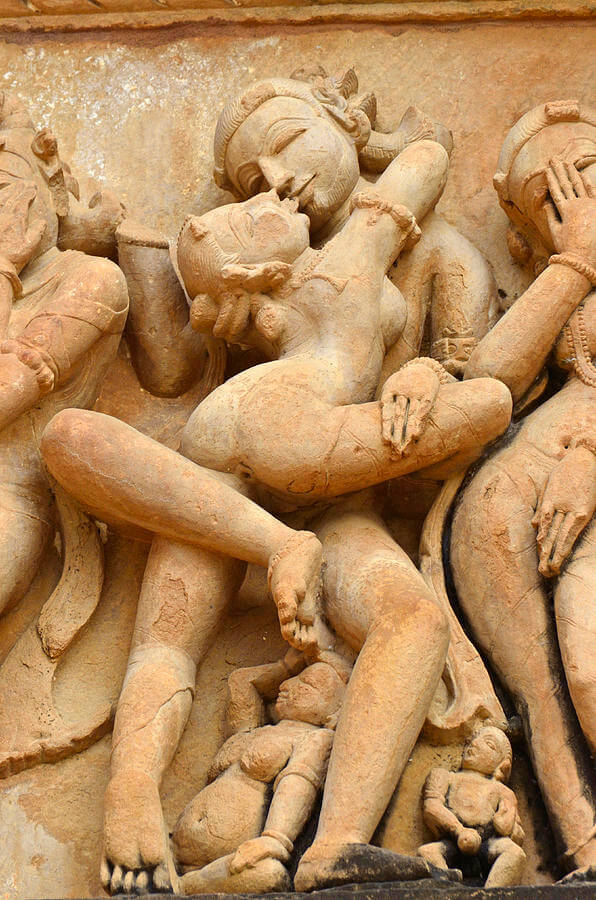
Vatsayana wrote the grammar of Kama – The Kamasutra where he scientifically elaborated on the rituals and techniques of attaining the Kama. In the prologue of the Kamasutra, Vatsayana mentions Prajapati – Lord of Beings, who pronounced ten lakh chapters for observing Dharma, Artha, and the Kama.
Dharma was discussed by Manu, Artha by Brihaspati, and the Kama by Shiva’s attendant Nandi. Apsaras translated the aspect of Kama as described in the Kamasutra to be viewed and learned and subsequently be practiced in order to attain Moksha-Salvation.
The Puranas discuss a set of fourteen Amorous Apsaras, created for the beautification of Indralok. The Surayanas of Indra Sabha are bestowed with beautiful bodies and youth, and these celestial maidens are known by names such as Dhanurupa, Mahabhaga, and Tilottama.
The Vayu Purana mentions about the imagery of erotic Apsaras and their physical attributes. It describes these celestial nymphs to possess golden skin texture, submerged is an exotic fragrance with an orb that could intoxicate the onlooker.
Their touch alone could create desire and enhance pleasure. It introduces a group of thirty-four Apsaras of which Surottama was the most special, the rest well-known names include Misrakesi, Chasi, Varnini, Alambusa, Marichi, Putrika, Vidyutparna, Tilottama, Adrika, Laksana, Devi, Rambha, Manorama, Suvara, Subahu, Purnita, Supratisthita, Pundarika, Sugandha, Sudanta, Surasa, Hema, Saradvati, Suvrata, Subhuja, and Hamsapada.
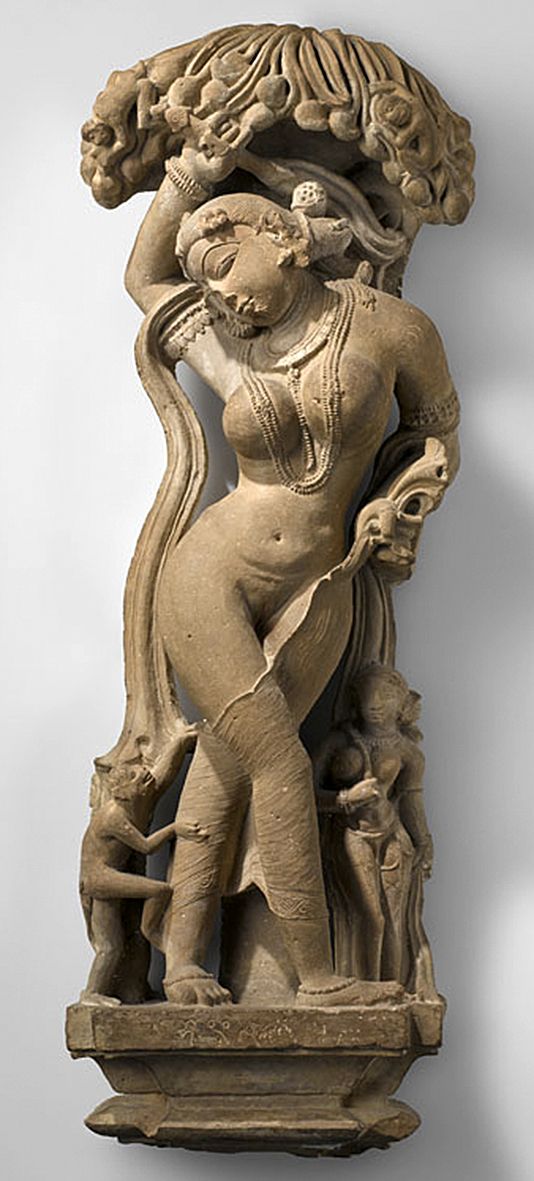
Brahmanda Purana also has a list of twenty four Apsaras such as Misrakesi, Chasi, Parnini, Alambusa, Marichi, Suchibha, Vidyutparna, Tilottama, Adrika, Laksmana, Ksetna, Divya, Rambha, Manobhava, Asita, Supriya, Subhuja, Pundarika, Jagandha, Sudali, Surasa, and Subahu.
Lord Indra used these beautiful feminine armaments to safeguard his position that would often be under threat by the steadfast penitents of Rishis and Munis. Visvamitra was fascinated by the gorgeousness of Apsara Menaka, he engaged in an amorous relationship with her and then fathered Shakuntala through her.
The Shlokas below from Valmiki Ramayan reveal the entry of Apsara Menaka into Viswamitra’s life and hindrance that followed
तां ददर्श महातेजा मेनकां कुशिकात्मज:।
रूपेणाप्रतिमां तत्र विद्युतं जलदे यथा॥१.६३.५॥
tāṃ dadarśa mahātejā menakāṃ kuśikātmaja:|
rūpeṇāpratimāṃ tatra vidyutaṃ jalade yathā||1.63.5||
Meaning – There the most brilliant son of Kusika, Viswamitra saw Menaka whose beauty was incomparable. She looked like lightning in the clouds.
दृष्ट्वा कन्दर्पवशगो मुनिस्तामिदमब्रवीत्।
अप्सरस्स्वागतं तेऽस्तु वस चेह ममाश्रमे।।1.63.6।।
अनुगृह्णीष्व भद्रं ते मदनेन सुमोहितम्।
dṛṣṭvā kandarpavaśago munistāmidamabravīt|
apsarassvāgataṃ te’stu vasa ceha mamāśrame||1.63.6||
anugṛhṇīṣva bhadraṃ te madanena sumohitam|
Meaning – On seeing her, Viswamitra came under the influence of the God of love and fell in love with her. He said, O Apsara! Welcome to my hermitage stay here. I am infatuated with you: Oblige me.
बुद्धिर्मुनेस्समुत्पन्ना सामर्षा रघुनन्दन।
सर्वं सुराणां कर्मैतत्तपोपहरणं महत्।।1.63.10।।
buddhirmunessamutpannā sāmarṣā raghunandana|
sarvaṃ surāṇāṃ karmaitattapopaharaṇaṃ mahat||1.63.10||
Meaning – O Delight of the Raghus! A sense of indignation filled the mind of the ascetic. All this is the conspiracy of the Gods to deprive me of my great austerities’, he thought.
अहोरात्रापदेशेन गतास्संवत्सरा दश।
काममोहाभिभूतस्य विघ्नोऽयं समुपस्थित:।।1.63.11।।
ahorātrāpadeśena gatāssaṃvatsarā daśa|
kāmamohābhibhūtasya vighno’yaṃ samupasthita:||1.63.11||
Meaning – Night and day deluded by lust I have wasted ten years. A hindrance has been posed to my dedicated Tapas.
– Valmiki Ramayana
Similarly Sardvanta, upon seeing partially clad Apsara Janapadi, got engrossed in her love, and through his seed, he fathered Kripa and Kripi. Guru Drona the teacher of the Pandavas and the Kauravas came to the world when his father Bharadwaja spurted his seed in a pitcher upon seeing the unclothed Apsara Ghritachi.
Sage Vyasa also begot a son Suka by voluntarily discharging his seed, on seeing Apsara Ghritachi. Mankanaka, upon seeing a glorious celestial Apsara bathing bare, spurted semen into the water and then the Sapta Rishis were born. Likewise, sage Vibhandak was charmed by Apsara Urvashi and Rishyasringa was born.
King Drupada, the sages Agasthya and Vasishta were also born from the involuntary release of seed from Varuna and Mitra upon seeing Urvashi rise out of the Yajna. Their semen falls into a mud pitcher, and the fetus of Agastya grows along with his twin sage Vashistha in the Kumbha- the Urn.
In almost all the above instances Lord Indra had used the charming Apsaras and put them at task to spoil the penance of the sages and thus remaining secured as the Lord of Heaven.
The Apsaras have been creatively portrayed erotically in the Shringara rasa.
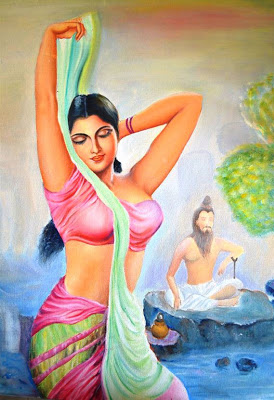
This Rasa of the Natya Shastra shows Aayoga– anticipation, Viprayoga– unpleasant separation after a quarrel or a broken promise to meet. Sambhoga – conjugal pleasure. The state of Aayoga is mostly depicted in temple sculpture, the Apsara looks forward to meeting her love interest and it is conveyed through her gaze and body posture.
In the state of Viprayoga that is mostly seen in written and pictorial illustrations, the Apsara is described as a lonesome and saddened soul after a bicker with her lover. Sambhoga depicts the Apsara engaged in conjugal intimacy with her beloved, thus enjoying the Kama.
Sambhoga is mostly depicted in the temples. Most famously magnificent depictions of Kama can be found in the ancient Hindu temples of Khajuraho, Sun temple Konark, Virupaksha, Modhera Sun temple, Belur, etc.
Navarasas, Shringara rasa, and the Kama have an intricate connection with love, craving, desire, emotions, and sensuality. Apsaras, portraying creative erotic postures and indulgence convey blissful spiritual dimensions beyond mere lustful pleasure. They are shown dancing, dressing, undressing, mothering, and indulging in the Kama.
The magnificent Hindu temples substantiate architectural brilliance and the depiction of the Kama in collaboration with the alluring Apsaras, Kichakas, Nayikas, Madanikas affianced in numerous scenes of Shringara Rasa and passionate indulgence.
The scriptures have captured these passionate damsels as a medium of arousing love. On the whole, the Apsaras are beautifully crafted celestial beauties, meticulously detailing the various syntaxes of eroticism, acting as Divine catalysts in the Kama.
Explore Apsaras series Part I, II, III , IV, V, and VI
Disclaimer: The opinions expressed in this article belong to the author. Indic Today is neither responsible nor liable for the accuracy, completeness, suitability, or validity of any information in the article.

